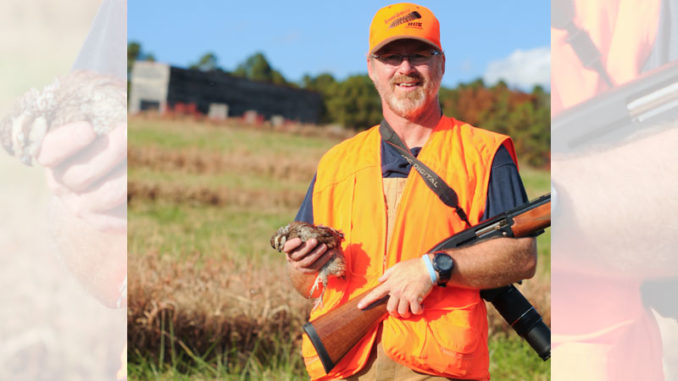
Preserves give hunters in the Carolinas the opportunity to sample upland game birds the way their elders did in past decades.
Before whitetail deer and wild turkeys became the flagship species for hunters in the Southeast, bobwhite quail was king. Back when boys rolled up into the high-school parking lot with shotguns in gun racks in the back window of the truck — and no one minded — it was common to stop along the way to school and kick up a covey of quail before heading to class.
Back in those days, the “waste lands” that made the area much more rural consisted of cutover fields and farm lands. Those areas were perfect habitat for rearing quail, rabbits and other small-game species.1
Unfortunately, changes in land use and urban sprawl have changed the landscape for hunters. The fields and farms that once held abundant quail and other small game are few and far between, and the small-game birds and animals have been unable to adapt to the changing landscape the way deer and turkey have.
But does that mean that upland game hunting is a thing of the past? The answer is a solid no.
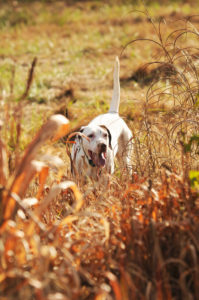
What has replaced quail hunting on the lands of your relatives and neighbors is a more organized and more planned version of upland bird hunting. It’s called a hunting preserve.
Hunting preserves began showing up in the Carolinas when it became clear that quail were fighting a losing battle. A typical preserve may encompass 500 to 10,000 acres and provides guided hunts for a fee or a paid membership.
According to Mike Johnson, general manager of The Clinton House Plantation in Clinton, S.C., one of the benefits of hunting upland birds is that quail, chukar and — to a lesser degree — pheasant, prefer to hide in cover rather than fly, remaining in the vicinity where they were planted when the hunting party arrives. Pointing and retrieving dogs are used, just as in the old days of plantation hunting, to point, flush and retrieve birds.
“Our wildlife habitat at the preserve is well maintained, but not to the point that it could sustain wild numbers of the birds hunted,” Johnson said. “The solution is to use pen-raised birds, either purchased or reared on site.”
Birds are released in different areas, either well before or the day of the hunt, and once the hunt is under way, the similarities between hunting planted birds on preserve land and wild birds in natural surroundings can be seen.
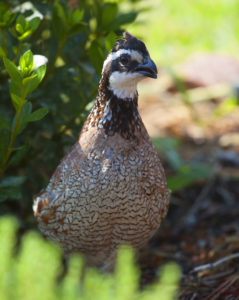
“I have a lot of customers who have hunted quail and other upland game birds in Texas, and (they) claim the hunting here is every bit as good and as challenging as what they get out West without having to walk 10 miles to get it,” said Johnson.
The typical hunt is a combination of walking behind pointing dogs, working coveys of quail, or hunting in stands of thinned pines ferreting out single birds that have broken from field coveys. A common criticism that many preserve managers hear about hunting released birds is that they don’t flush and fly as well or don’t act like wild birds.
“I’d invite you to come see for yourself,” Johnson said. “If a hunting party comes out here and kills 100 percent of the birds released on the day of the hunt, I will pay for their hunt.”
One of the benefits of preserve hunting is that in addition to quail, hunters can hunt non-native game birds such as pheasant and chukar, a Eurasian partridge native to the western United States.
Johnson often mixes quail and chukar in areas as these birds tend to stay put. Pheasant, on the other hand, need to be hunted shortly after they are planted.
“The chukar is a real popular bird,” Johnson said, “maybe not as fast as a quail because they are bigger birds. You definitely get more meat for the money there.”
Johnson said hunting preserves are the next generation of quail hunting. A lot of his hunters may remember days gone by or may have been out west where wild birds are still available, but to a larger degree, many of his hunters have only hunted released quail.
“The South has always been the stronghold for the traditions of hunting quail — watching the dogs work, the excitement of birds flushing, and the camaraderie of hunters who hunt together,” he said. “Unlike deer or turkey hunting, which are pretty solitary, quail hunting has a lot of social aspects and we do everything we can to preserve that.”
A guide’s recommendations
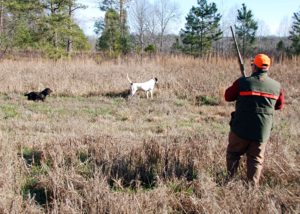
A guide at Contentnea Creek Shooting Preserve in Snow Hill, N.C., Walter Claybrook has some advice for hunters visiting a shooting preserve for the first time.
“Shooting sporting clays before you shoot (birds) is great practice,” he said. “Make sure you’re practicing with the same gun you’ll be using to hunt quail, and make sure you’re using the right gun and the right loads for the hunt.”
Claybrook said a lot of hunters bring their long-barreled waterfowl guns to preserves. He suggests shotguns with 26-inch barrels rather than 28- or 30-inch barrels, with chokes at improved cylinder or modified.
“Most novice hunters shoot too quickly and don’t give the bird time to get out there so the choke can do it’s job and let the shot pattern open up,” he said. “If they do hit the bird, it’s such a tight pattern it destroys the meat.”
Claybrook recommends nothing bigger than No. 7½ shot, with No. 8 being the most common and on occasion, No. 9. He also recommends hunting parties consist of two hunters per guide and nevermore than three, so each hunter gets ample but safe shooting opportunities.
“Another thing I suggest is hunt with a guide who will let you go back and hunt the birds you missed,” he said. “Some clubs only allow one try at each bird. You want a guide who will remember what’s left on the field and will work back through for a second try at the birds that didn’t get killed the first time around.”
North Carolina’s top public quail hunts
Voice of America Game Lands
Voice of American Game Land in Beaufort County holds six permit hunts from November through January. David Turner, a biologist wit h the N.C. Wildlife Resources Commission, said it is a unique hunting opportunity.
“We do call counts and hear and see quail when we are working there,” he said.
The 2,800-acre game land is kept in early successional habitat with prescribed burning. It has an entrance road, parking area and 22 miles of walking roads and trails. Turner said hunters can see their bird dogs for 100 yards in many places as compared to the surrounding terrain, which is in industrial timber production.
Murphy-Brown Farms Corporate CURE area
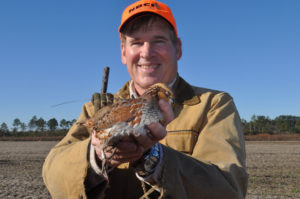
Murphy-Brown Farms in Bladen county holds four permit hunts in December and January. Benjy Strope, a Commission biologist, said they can be amazing hunts, but a couple of bad-weather years hurt quail numbers.
“It is a lot of great habitat, which usually means there are lots of birds there,” Strope said. “Since 2006, my hunt results show 150 coveys flushed in 265 hours of hunting. Some hunters may only see a quail or two, while others will flush several coveys.
“At 4,300 acres, it’s too large for anyone to hunt in a day. I give hunters a tour of the property and give them the option of showing them where the birds are, or they can pick their own spot.”
Strope has a few quail outfitted with radio-transmitter harvests, so he can locate coveys on the property, which is a working farm with field borders and other early successional habitat areas.
Suggs Mill Pond Game Land
Suggs Mill Pond Game Land in Bladen and Cumberland counties holds five two-day permit hunts in November and December. Much of its 10,838 acres is early successional habitat. Longleaf pine restoration is the goal, with intensive use of prescribed fire and mechanical control of competitive trees and shrubs that benefits quail.
“It is not the type of hunt where anyone accompanies hunters,” Strope said. “You just find a good spot, get out with your bird dog and start walking. Our call counts have been better at Suggs the past couple of years than at Murphy-Brown.”
The Commission plants several fields for doves but converts most of the larger small grain food plots to deer forage before quail season. Some remaining strips and small food plots of with small grains remain to attract quail.
— Mike Marsh
Shoot the other preserve birds
Shooting preserves in the Southeast aren’t limited to bobwhite quail; many offer hunts for several species of non-native but exciting gamebirds, including pheasant and chukkar and Hungarian partridges.
Marcus Heath, a guide at Primland, a huge preserve in southwestern Virginia, five minutes across the North Carolina border, said the best preserve hunting is in the colder months, when bird dogs are at their peak in form.
“The later you get, the warmer it gets, the harder it is on the dogs,” he said. “The hunting is much better when it’s cold, in November, December and January..”
Primland has more than 200 acres of habitat for game birds in 10- and 20-acre patches of corn, sorghum and other grains, giving hunters a real feel for a midwestern pheasant or chukkar hunt.
— Dan Kibler
SC taking steps to restore wild quail
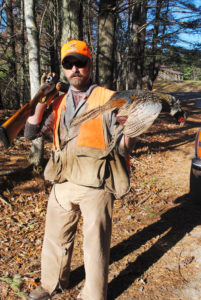
In 2014, a group of local and federal agencies, private landowners, sportsmen and conservationists formed the South Carolina Quail Council, which became the driving force behind the South Carolina Bobwhite Initiative (SCBI).
Established in 2015 and based on a plan written by the S.C. Department of Natural Resources with the support of the National Bobwhite Conservation Initiative, the SCBI aims to restore northern bobwhite quail to their early 1980s levels.
The SCBI established four regions to focus restoration efforts, selected by wildlife biologists as having the most potential for growing coveys of quail. These regions contain an estimated 23,000 coveys, with projections that the number could improve to 74,000.
In addition, SCBI and its 31 partners — organizations including the S.C. Forestry Commission and the U.S. Fish and Wildlife Service — offer services such as prescribed fire training, forest management assistance and an equipment rental program to help landowners by providing the tools necessary to develop and manage suitable upland habitat. Some partners also provide assistance in the form of subsidies for forestry management services and the purchase of seed for brooding fields and food plots.
According to Michael Hook, small-game program leader for SCDNR and a member of the South Carolina Quail Council, the SCBI has helped provide more than 200 landowners with management plans, and about 30 landowners have received funding specific to bobwhite habitat restoration.
“Hopefully, by showing folks that, if they commit as little as 6 percent of their agricultural property for upland habitat, we can improve wild quail numbers and once again create excitement around one of our oldest sporting traditions here in South Carolina,” he said.
It is still too early to accurately assess the SCBI’s impact on wild quail populations. However, given their ability to rapidly reproduce, with hens capable of laying about 12 eggs per clutch and producing two to three clutches per brooding season, it is expected that they will begin to respond to the habitat restoration efforts quickly.
To find out more information about the South Carolina Bobwhite Initiative and how you can help, visit their website, www.dnr.sc.gov/quail.
— Justin Goethe

